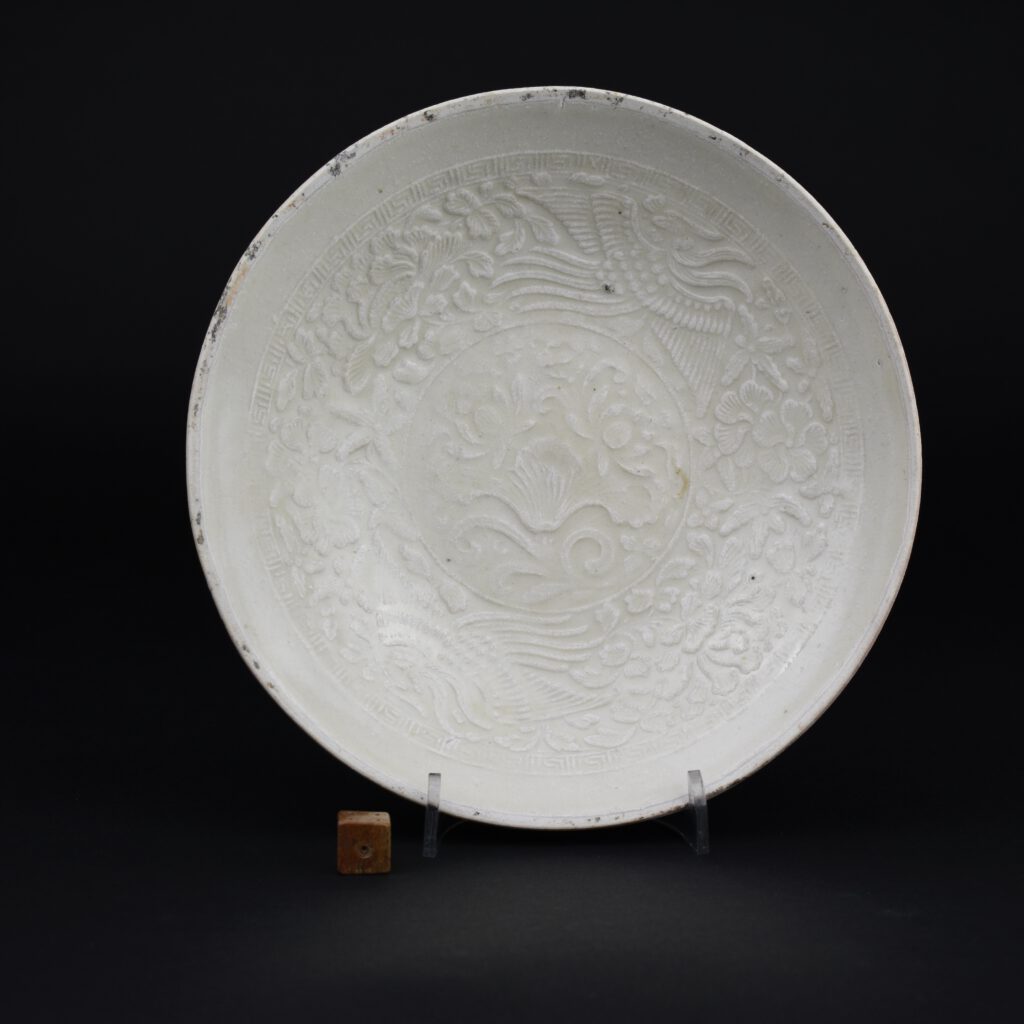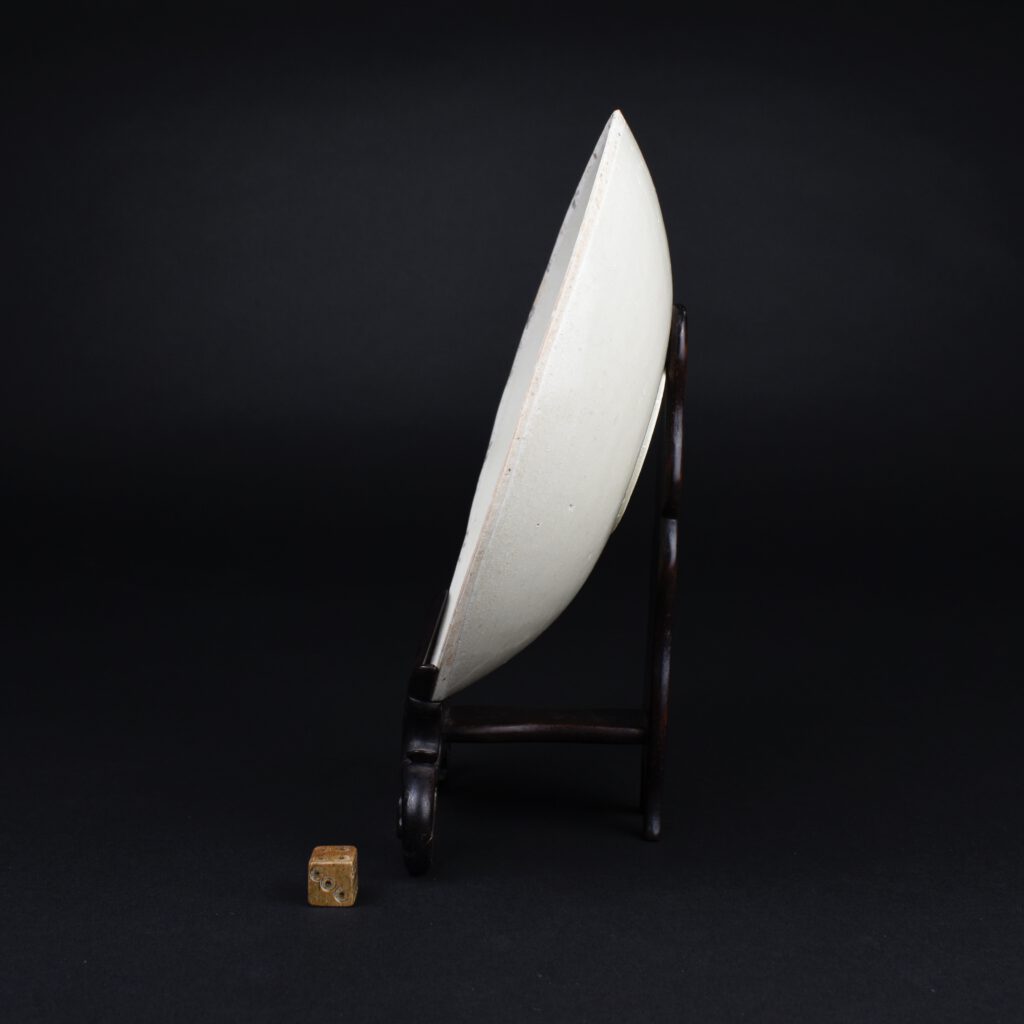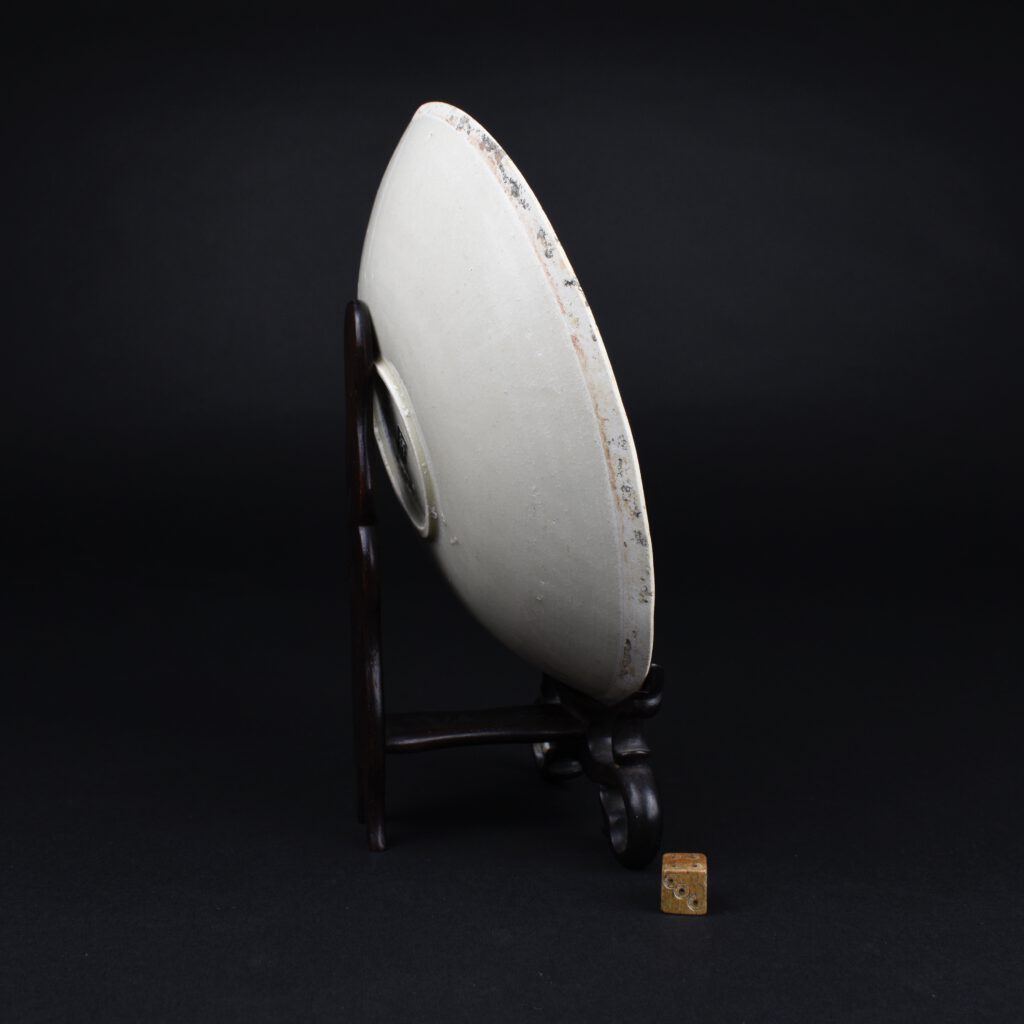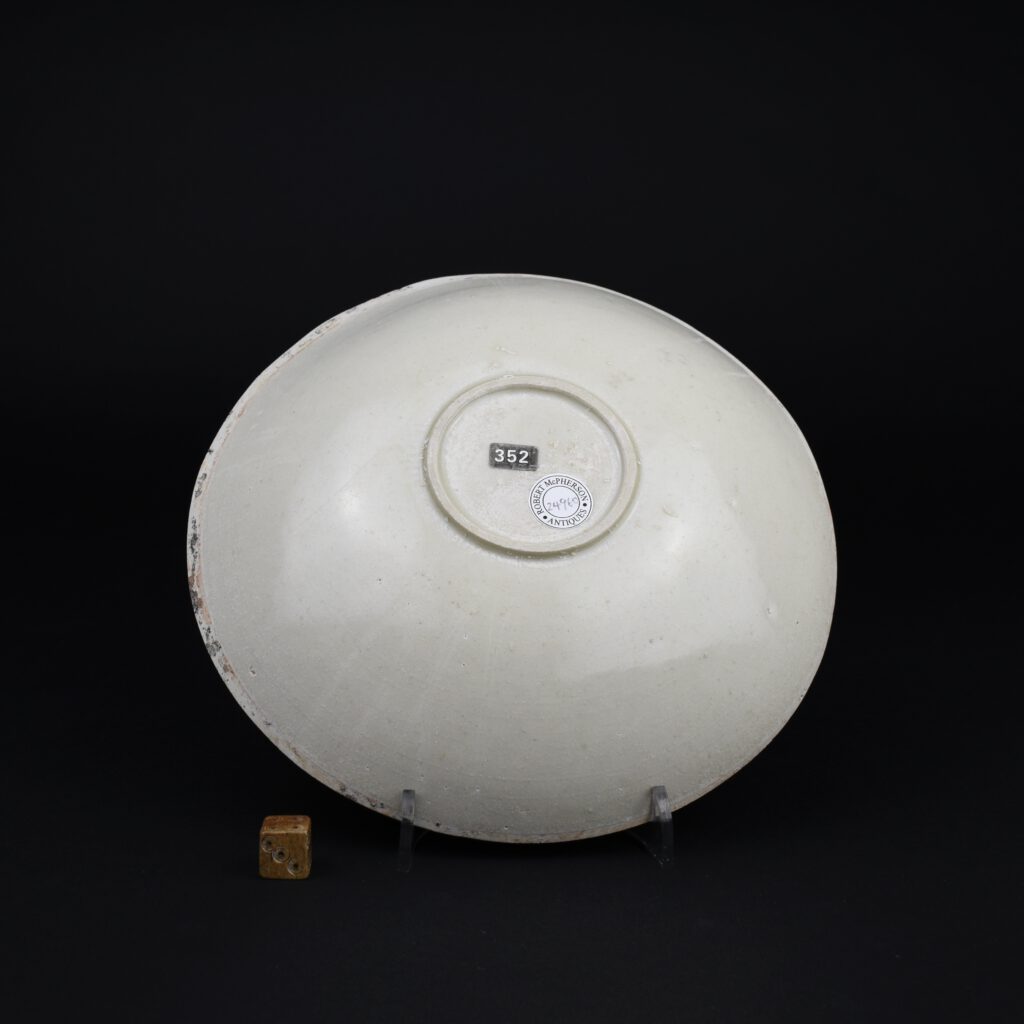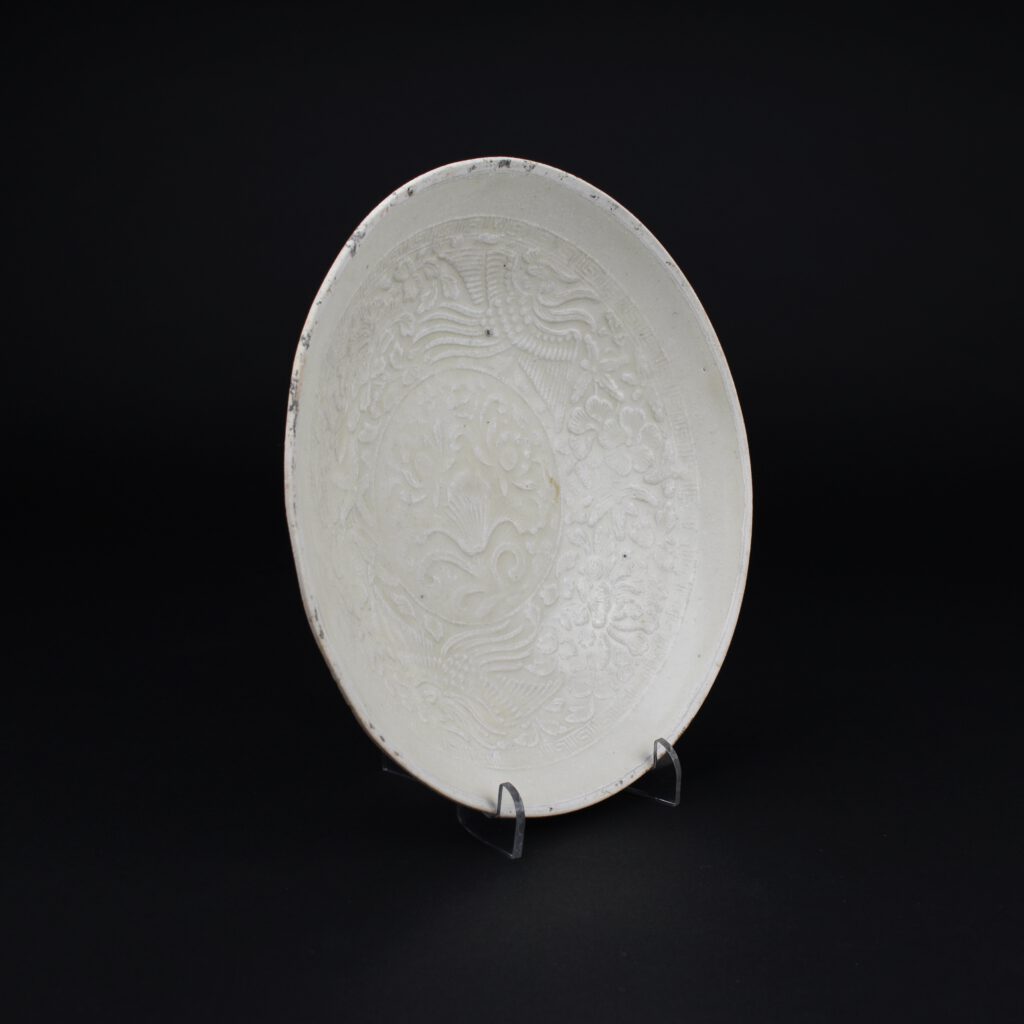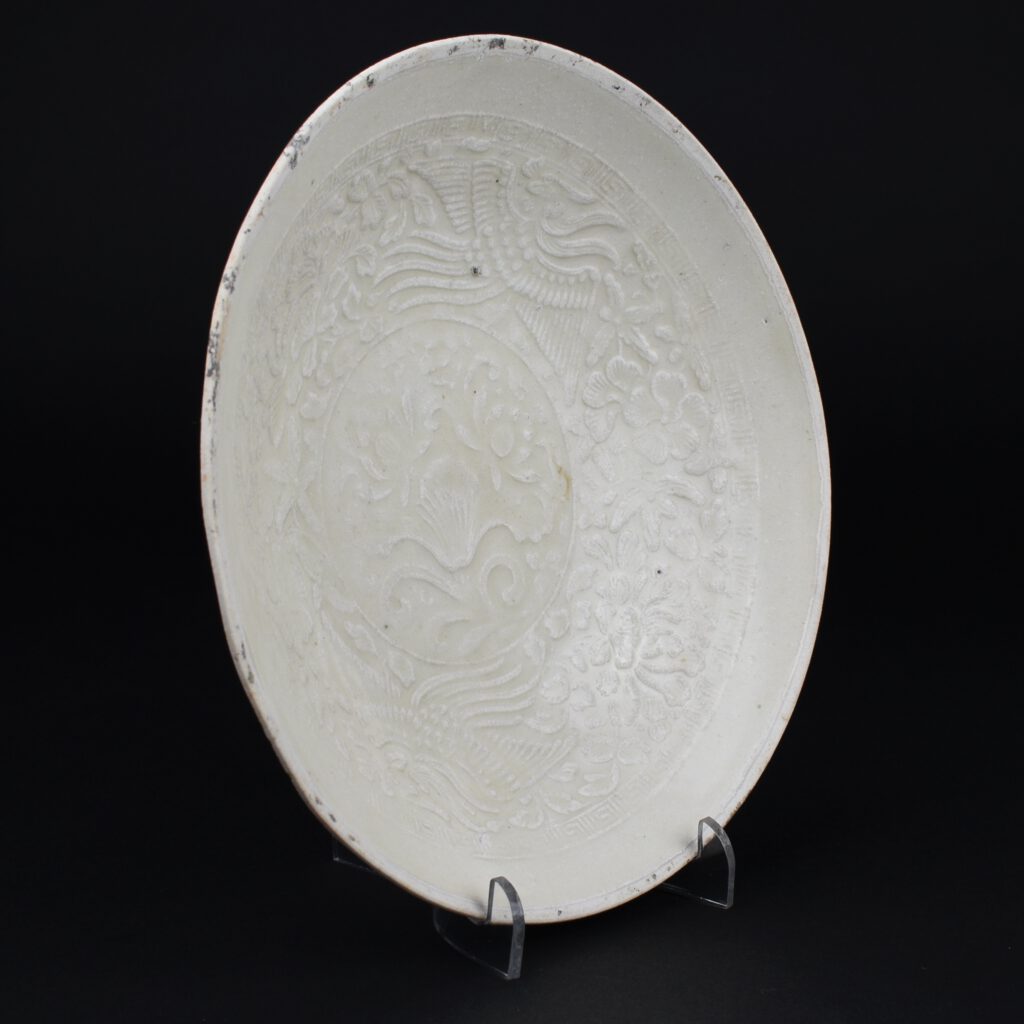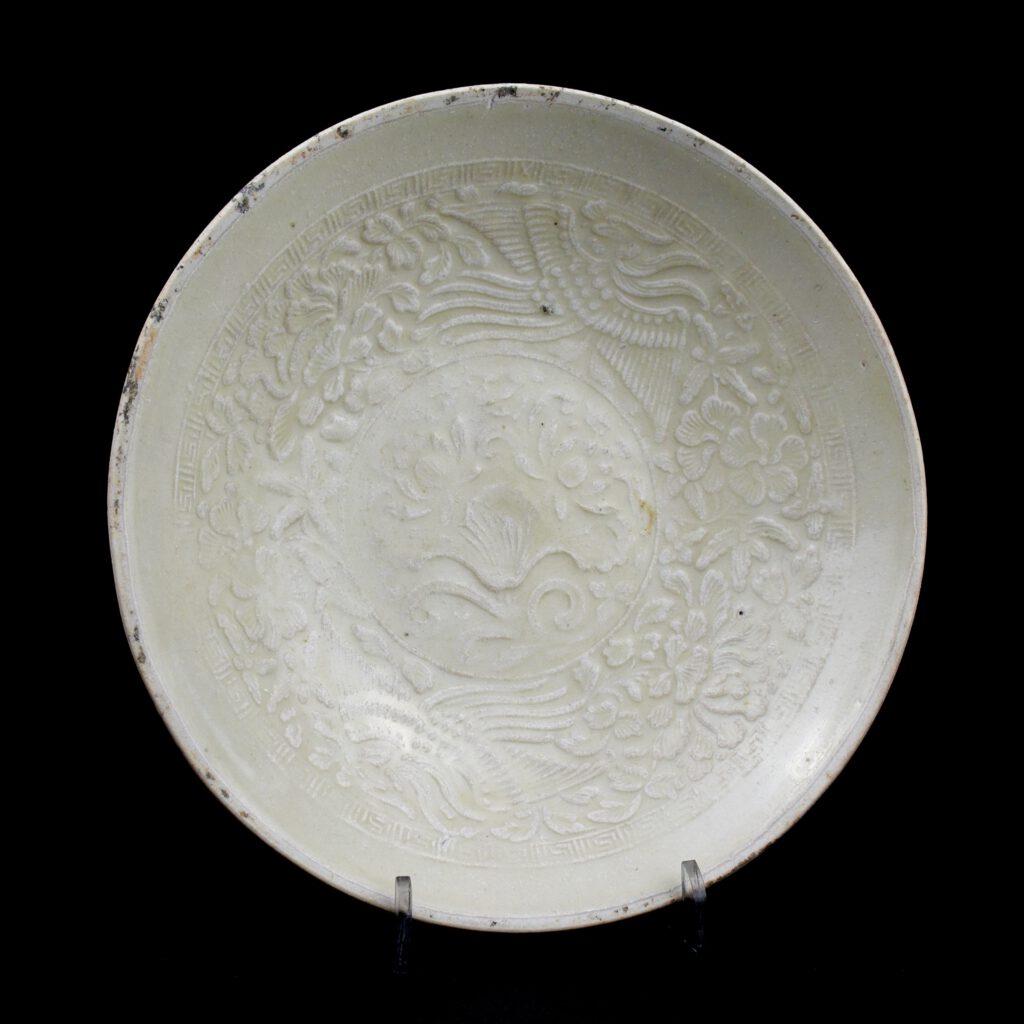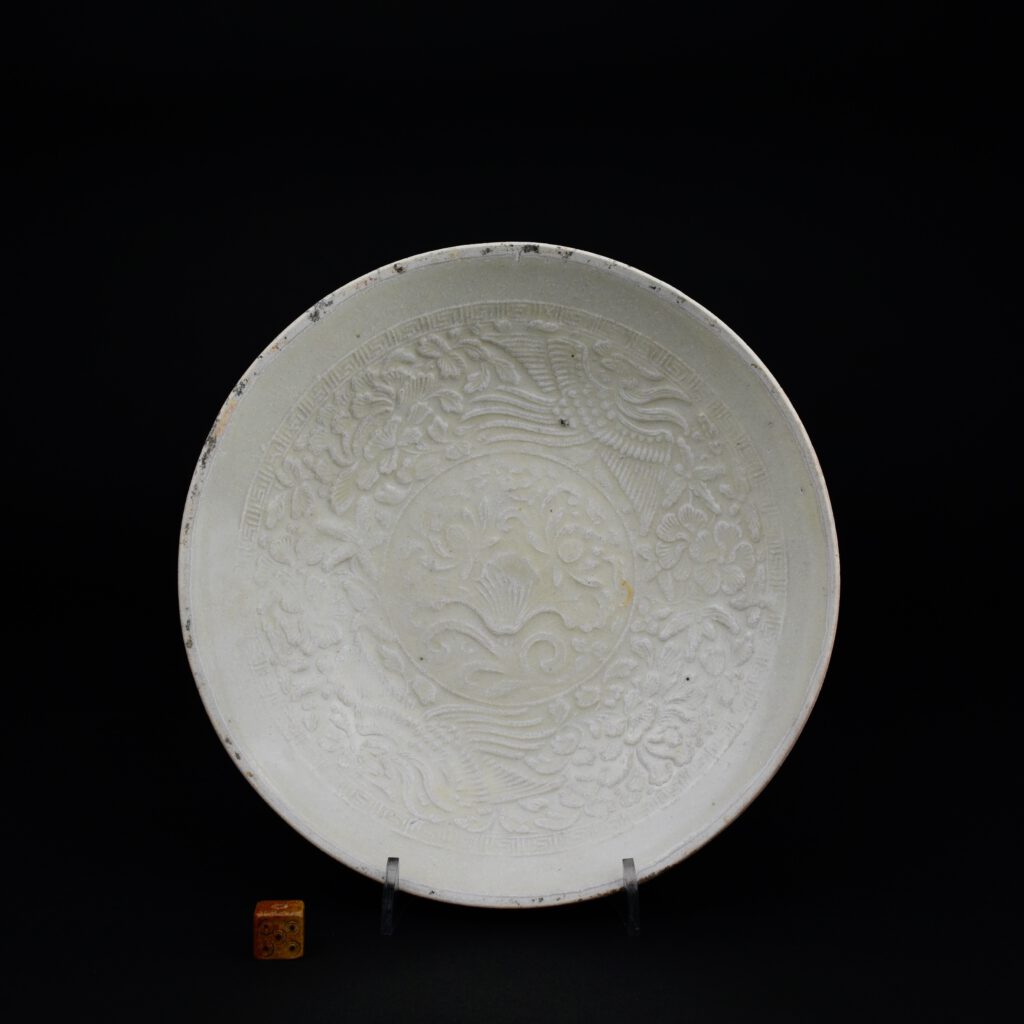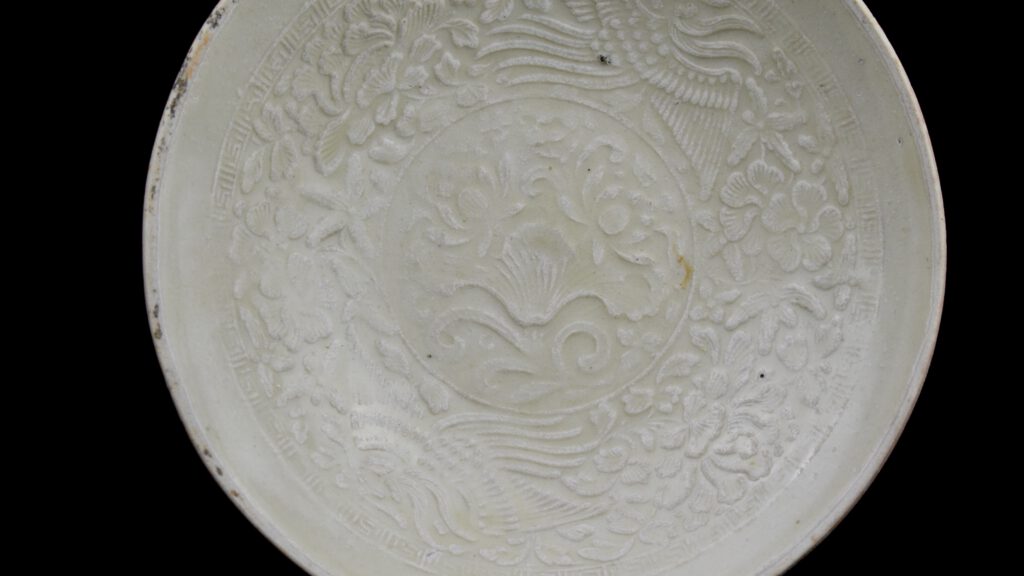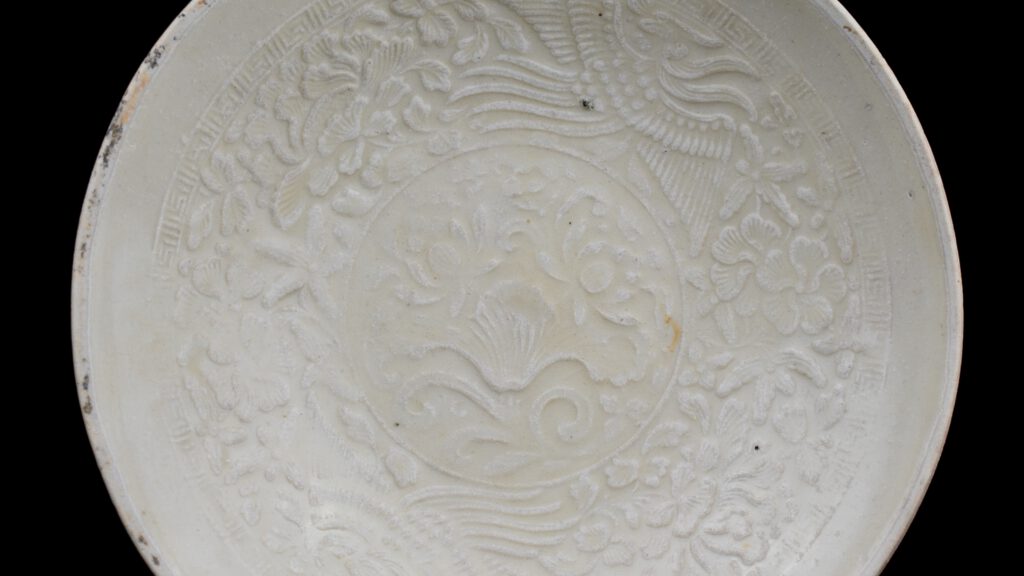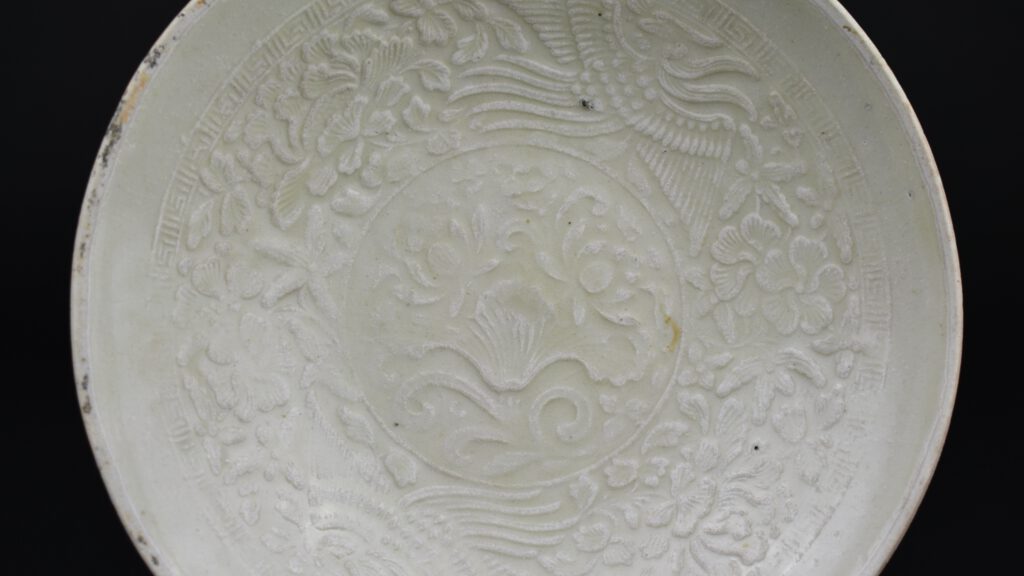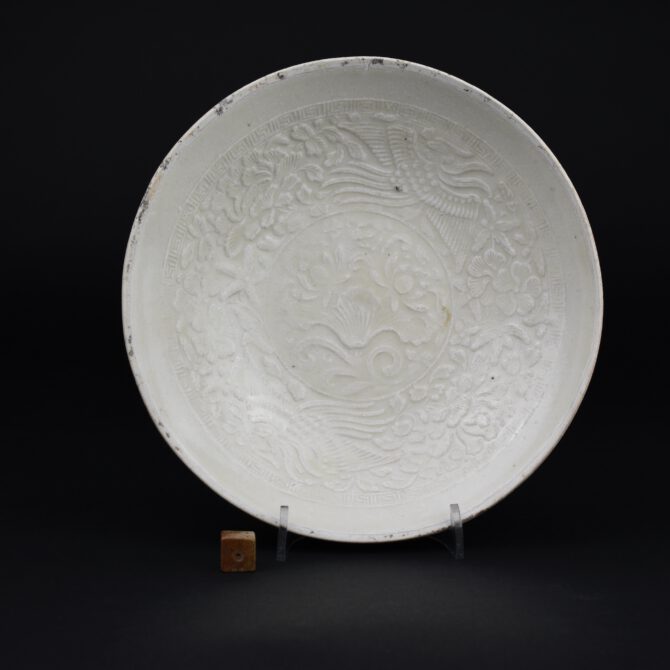
Song Qingbai Ware Shallow Phoenix Bowl
A Southern Song Dynasty or Yuan Qingbai Porcelain Shallow Bowl 13th Century, Perhaps Jingdezhen Kilns. The shallow form is moulded with a complex design which closely relates to contemporary Ding ware. The center is of this bowl is moulded with flowering lotus rising from the water. There is a continuous scene of abundant flowering plants including peony, there are two mirrored Phoenix among the flowering foliage with a border holding the design together. As is typical with Qingbai ware the rim of this thinly potted bowl has the glazed wiped clean, that enabled it to be fired on the rim. There are the remains of the original metal rim adhering, the metal would have made the bowl smooth it the hand. A related Qingbai bowl is in the Percival David Collection PDF A443, published in : Qingbai Ware, Chinese Porcelain of the Song and Yuan Dynasties (Edited by Stacey Pierson, Percival David Foundation. 2002. ISBN 0-7286-0339-X) page 56 item 17. The same publication illustrates another version, somewhat closer, page 58, plate 18
SOLD
- Condition
- In excellent condition, tiny chips to the inner part of the foot. Firing fault - There is an iron-oxide stain to the rim, some faults to the surface of the porcelain before glazing. .
- Size
- Diameter : 17.8 cm (7 inches).
- Provenance
- From a Private English Collection.
- Stock number
- 24960
- References
- A related Qingbai bowl is in the Percival David Collection PDF A443, published in : Qingbai Ware, Chinese Porcelain of the Song and Yuan Dynasties (Edited by Stacey Pierson, Percival David Foundation. 2002. ISBN 0-7286-0339-X) page 56 item 17. The same publication illustrates another version, somewhat closer, page 58, plate 18
Information
Qingbai Ware :
The earliest known qingbai wares were produced in Jingdezhen in Jiangxi province around the late 10th century and are characterised by faint pale-blue glazes on low, wide forms. Qingbai continued to be enormously popular and highly produced throughout the Song dynasty (960-1279) and was prevalent in the Yuan dynasty (1279-1368), but slackened during the Ming dynasty (1368-1644) until being replaced by tianbai, ‘sweet white’ ware. The initial forms of qingbai were simple bowls and dishes, but by the mid-Northern Song the forms had advanced to include a wide variety of objects used for daily life such as ewers, boxes, incense burners, granary models, vases, jars, sculptures, cups, cupstands, water droppers, lamps, grave wares, and tools for writing and painting. The precedent for the majority of these forms is found in earlier metalwork and lacquer and Rawson has suggested that the imitation of silver was the primary force behind the production of white wares, including qingbai.
